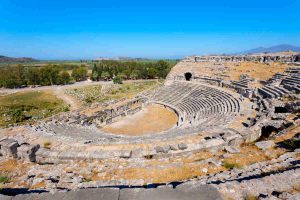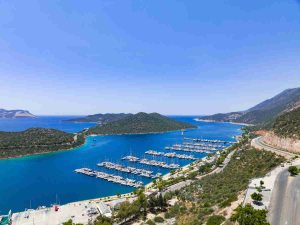During tours, guides not only explain the most notable details of each monument, but also refer to their promoters. That’s why, in this post, we show you who the main Ottoman sultans are, as we have done on other occasions with such notable figures as the Byzantine Emperor Justinian I or the father of the Turkish nation, Atatürk.
Osman I: The Founder
It is necessary to begin this list with Osman I, as he is the founder of the Ottoman dynasty (which takes its name from his Arabic name Uthman). He ruled his own emirate at the beginning of the 14th century, as a successor to the previous Seljuk Sultanate of Rum, in Asia Minor.
Mehmet II: Conqueror of Constantinople
The territory dominated by Osman I in the 14th century could not be considered an empire, but successive conquests and border expansions made it possible in the 15th century. And more especially, after the conquest of Constantinople in 1453, by Sultan Mehmet II. In fact, he declared himself the successor of the Roman emperors and received the nickname “Conqueror”.
Suleiman the Magnificent: Territorial Zenith
Another nickname that speaks volumes is that of Suleiman I, nicknamed “the Magnificent”. Not in vain, with him the Ottoman Empire reached its territorial zenith in the mid-16th century, extending through much of Eastern Europe and the Near East, including Baghdad, as well as much of North Africa. Furthermore, he promoted great monuments, among which stands out the mosque that bears his name in Istanbul, the work of Mimar Sinan, a masterful architect who also worked for two other sultans.
Selim II: Bittersweet Sultan
Selim II was an Ottoman sultan who was not too bellicose, delegating this task to his grand viziers. This did not prevent the Ottoman Empire from scoring two great victories, with their respective conquests: Cyprus and Tunisia. However, the Western world also remembers him for a resounding defeat, that of the Battle of Lepanto in 1571, which halted the Ottoman advance through European lands.
Ahmet I: Sultan Who Left a Mark
Another sultan of inevitable mention is Ahmet I because, in fact, the main square in the historic center of Istanbul bears his name (Sultanahmet Square). In addition, one of the great mosques to visit on our tours was promoted by him, which is the Blue Mosque, from the early 17th century. Furthermore, another important legacy of his reign is the abandonment of royal fratricide: the practice of murdering brothers and pretenders to the throne, which until then had found legal support in the Ottoman dynasty.
Ahmet III: The Poet Sultan
While most of the previous sultans gained fame for their military victories and their heavy hand with enemies, Sultan Ahmet III demonstrated a different demeanor. In fact, he is known as the “poet sultan” for his inclination towards the arts. He also promoted advances in infrastructure, a good example of which is the Fountain of Ahmet III, in Sultanahmet Square, from the mid-18th century to improve the water supply for the population.
Mehmet VI: The Last Sultan
Much to his regret, Mehmet VI went down in history as the last Ottoman sultan. He came to the throne in a turbulent period, in the last throes of World War I. In fact, his emissaries had to sign the division of the empire, which hurt Turkish nationalists, igniting the fuse of the subsequent Greco-Turkish War, after which the current borders of Turkey were established, roughly. In 1922 he went into exile in Italy, paving the way for the subsequent creation of the Republic of Turkey.



